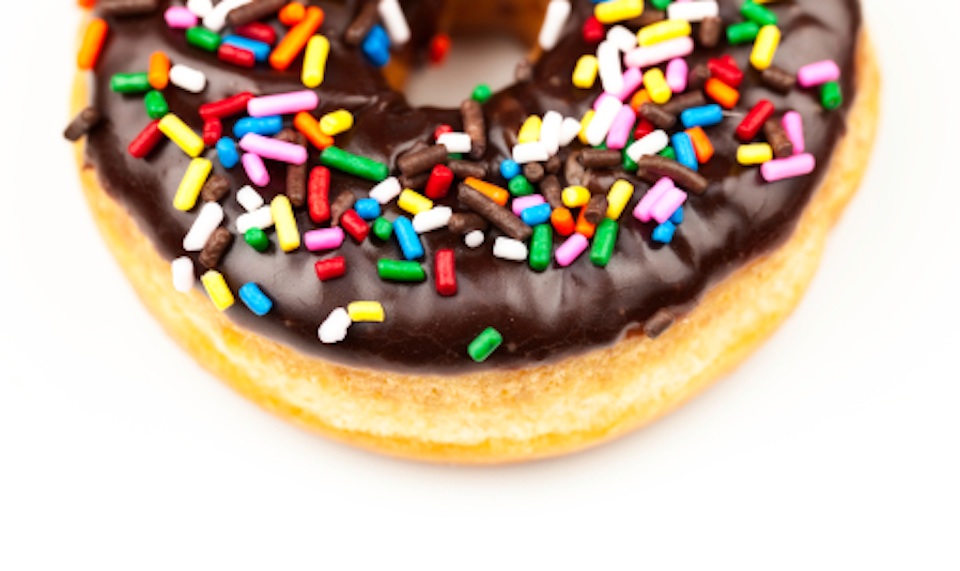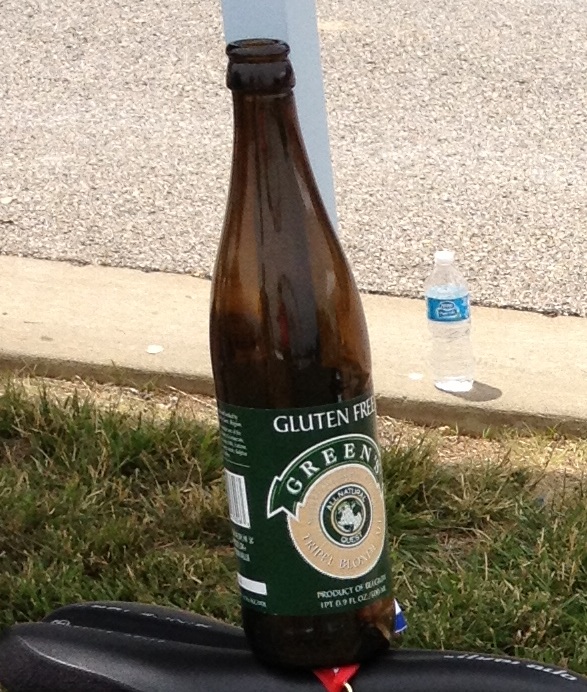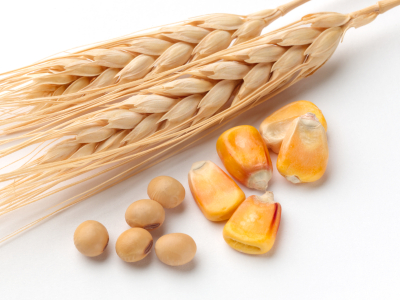 Are you addicted and don’t know it?
Are you addicted and don’t know it?
From time to time, we all stray off of our normal ‘healthy’ or weight loss diet. It’s not a big deal unless you have trouble getting back on track. Did you know you can have hidden addictions to foods that you eat on a regular basis? These addictions can be as strong as nicotine to a smoker or heroin to a junkie.
For most people, it’s foods containing sugar, grains (especially wheat), and dairy products. While these foods seem to be everywhere, they are also actually highly addictive. And don’t be fooled for a second in thinking that food manufacturers don’t know this little factoid, and do their best to put sugar, wheat and dairy in as many things as they can.
These foods can stimulate opiate-like receptors in the brain, and your body actually responds to these foods just as it would heroin or morphine. The opiate-like ingredients in dairy and wheat are proteins, which coincidentally are also known to be highly allergenic. In dairy, that protein is casein, and in wheat, it is gluten.
These proteins trigger the release of exorphins (very similar to endorphins) that go straight to the brain and create a feeling of instant comfort and pleasure. Think of all the combinations of dairy and wheat that people love and consider as comfort foods, or foods they can’t live without: macaroni and cheese, pizza, bagels and cream cheese, cookies and milk, grilled cheese sandwiches, and on and on.
Are sugar, wheat and dairy your weakness? Think about it. Maybe you weren’t even aware of that addiction.
The tough thing about straying off your diet and eating foods with wheat, dairy or sugar makes it especially difficult to get back on track. You become addicted. And just like the heroin junkie who thinks he can have “just a little”—once you’re off track, it becomes exceptionally difficult to break free from these foods’ grasp.
The interesting thing about wheat and dairy is that most often if you find you have a hard time living without, or staying away from these foods, you most likely are allergic to those proteins—the gluten and the casein. And I don’t mean the kind of allergy that makes you break out in hives, and or makes your throat swell, but it is often an allergy, nonetheless.
What do these allergic reactions cause? Inflammation in the form of stuff like bloating, weight gain, (usually excess water) stomachaches, sinus and nasal drainage, earaches, irritability, depression, fatigue, brain fog, ADHD, acne, joint pain, headaches….and non-stop eating.
This vicious cycle of allergy and addiction can interfere with digestion and your body’s ability to extract nutrients from food. It also affects the immune system, helping to magnify allergies, and weaken it’s defense system, so you become more susceptible to viruses, bacteria, and yeast overgrowth.
Ironically, the very foods that you just cannot live without are usually the same foods that cause some of the worst reactions, and cause you to overeat. So you are caught in an allergy-addiction cycle.
Think about it.
Have you ever eaten a bowl of cereal and as you are eating it, you get hungrier and hungrier? Next thing you know you’ve eaten three bowls of cereal. Have you ever said, “I just can’t live without my bagels? Or “My pasta”? You need bread and butter at every meal, or just can’t stop when you eat crackers and cheese? Is your favorite comfort food ice cream or pudding?
Take a look at what you are eating…addiction often lurks in your daily habits.
Does this mean you’re weak? Do you lack willpower? No. It’s just that these addictive substances are wreaking their havoc on you and your best laid dietary plans.
Many ‘diets’ actually contain a built-in plan to fail if they contain dairy, wheat or sugar. How many times have you heard the standard “Eat whole grains and lots of dairy” instruction? Some of the most popular diet plans like Weight Watchers or Jenny Craig all contain moderate amounts of the big three addictive allergens—wheat, dairy, and sugar. This should come as no surprise. They want consumers to keep coming back and buying more of this stuff.
Having an allergy-addiction to any one or more of these substances is a little like an alcoholic thinking it’s ok to have just a small glass of wine or beer, instead a big one. What would you guess is going to happen at some point? That small portion grows or becomes more and more frequent.
The best solution to break free of the addiction/allergy cycle is to eliminate wheat, sugar and dairy from your diet altogether. While may sound somewhat extreme, you will be amazed at how much easier it becomes to stick to a healthy diet that keeps you at your optimal weight.
If giving up bread or milk makes you feel anxious and deprived, I can sympathize. I too, was once addicted to bread, milk and sugar as well. I’d try to cut back and cut calories to lose weight, only to end up on a (coffee cake, cookie, bagel, cinnamon toast) wheat binge after a few days.
I tried to eat less only to be on that same Merry-go-Round of addiction and overeating. I gained weight, and I felt awful. It wasn’t until I actually tried a two-week elimination diet, that I realized how fantastic and energetic I felt once I had gotten totally away from those foods.
This blog will go into the details of an elimination diet, but basically you totally remove wheat, dairy and any other foods you feel you just can’t live without. Then you re-introduce them, one at a time, and observe your reactions over a period of 24-48 hours
I’ve kinda developed and evolved a dietary strategy that helps me get back on track after a few days of this type of dietary disaster. I’d like to share that with you and hopefully you will be able to adopt this and find success as I have.
First of all, the best thing to do is to go ‘cold turkey’. Take the offenders out of your diet, totally. Remember the alcoholic with the small glass of wine? It doesn’t work. Take it all out—the sugar, the wheat and grains (other grains contain addictive gluten-like substances as well), and the dairy.
Then plan out your meals for the next couple days. It doesn’t have to be elaborate, but make it super healthy and high fiber. You’re doing a mini detox basically.
Surround yourself with awesome superfood veggies that are brilliant and brightly colored and will make you feel so spectacular that you won’t want to go back to those addictive foods. Add in some top quality protein and good fats and you’re golden. Cravings go away when you give your body what it truly needs.
So the idea is to load your body up with a ton of powerful antioxidant, anti-inflammatory, powerful nutrition to overcome the toxic load you’ve put in your body. And you want to have a lot of veggies in there that will feed your body what it needs and help to clean house as well.
So I generally plan on a few humongous salads with a good portion of healthy protein added in—free range chicken, grass fed beef, or some wild-caught fish, like salmon.
TAKEAWAY #1
Wheat, Dairy and Sugar are addictive substances, and for many people they produce an allergic, inflammatory reaction in addition to the addiction, making it extremely difficult to eat ‘just a little’. Meanwhile, you make it harder to lose weight and mess with your health.
TAKEAWAY #2
AVOID Wheat, Dairy and Sugar all the time. Avoid all processed, packaged foods and especially avoid “Diet” foods. Just an alcoholic cannot drink once in a while, neither can you eat this stuff “once in a while”.
TAKEWAY #3
When you get off track, quit the grains, sugar and dairy, COLD TURKEY, and arm yourself with a healthy diet plan for the next few days. Load up on veggies and healthy proteins and let your body detox this crap out. You’ll feel better quickly! Have a plan, and have some healthy meals lined up and you will feel satisfied and ‘clean’ again in no time.
Stay healthy and lean, my friends!!
Find out what foods age you the fastest and how to reverse aging here.
The Top 101 Foods that Fight Aging
 Catherine (Cat) Ebeling RN BSN, is a back to basics diet and nutrition specialist. In addition to her advanced degree in nursing from a major medical school, she has spent the last 30 years intensely studying diet, health and nutrition.
Catherine (Cat) Ebeling RN BSN, is a back to basics diet and nutrition specialist. In addition to her advanced degree in nursing from a major medical school, she has spent the last 30 years intensely studying diet, health and nutrition.
Cat’s book titled “The Fat Burning Kitchen, Your 24 Hour Diet Transformation” has sold over 100,000 copies worldwide, and has helped thousands of people transform their lives, lose weight and improve their health.
Her mission is to help others prevent disease and live their best life ever.
Nutrition made Easy. Simple.Smart.Nutrition.















